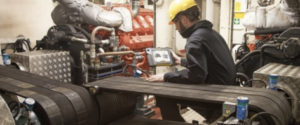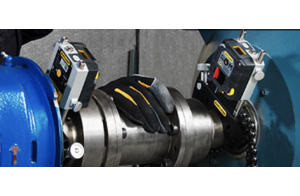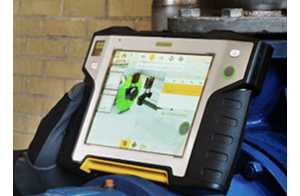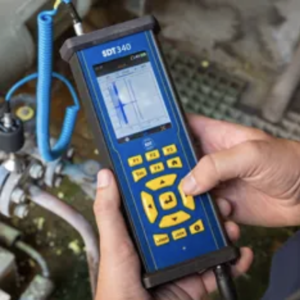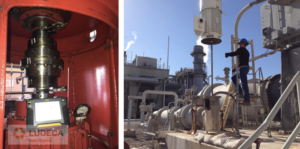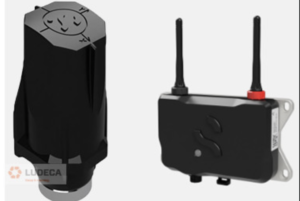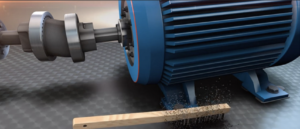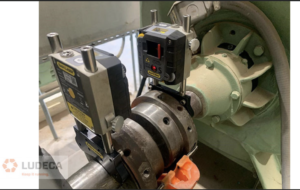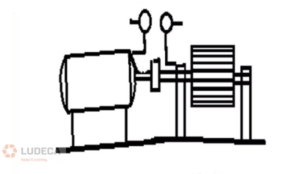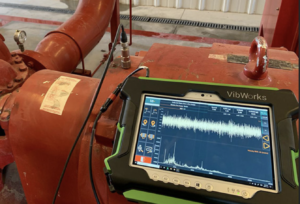In the world of industrial maintenance, laser shaft alignment stands out as a crucial technique for ensuring the optimal performance of rotating machinery. However, a significant challenge that technicians often encounter is the issue of repeatability. Achieving consistent alignment results across multiple measurements is vital for the longevity and efficiency of equipment. Laser alignment tools are known for their ability to deliver consistent and precise measurements with minimal components attached to the rotating machinery. When addressing issues related to measurement repeatability, it’s beneficial to focus on identifying and rectifying some of the most common and easily solvable problems. Repeatability is not just about getting the same results in a controlled environment; it’s about achieving those results under varying conditions and over time. Factors such as environmental changes, operational wear, and…
In the realm of industrial machinery maintenance, precision alignment plays a critical role in ensuring optimal performance and longevity. In the past, technicians have relied on tools like dial indicators for alignment tasks. However, the cost of using old alignment tools versus embracing the latest technology of laser shaft alignment is becoming increasingly apparent. Let’s delve into why upgrading to laser shaft alignment technology, such as the Easy-Laser® products, is not just a wise investment but a necessity in today’s competitive landscape. Firstly, the inefficiencies and limitations of old alignment tools like dial indicators are undeniable. These tools require meticulous manual measurements and calculations, leaving ample room for human error. Moreover, the time-consuming nature of the alignment process can result in prolonged downtime and lost productivity, ultimately impacting the bottom…
Don’t look at laser shaft alignment training as an expense. It is an investment in the growth and sustainability of your company. Our observations have revealed that numerous technicians may not fully understand the capabilities of their alignment tools and by offering essential training to your employees not only enhances their skills and knowledge but also results in your company’s overall profitability. Laser shaft alignment training offers several benefits, including: Improved Machine Reliability: Proper shaft alignment reduces wear and tear on machinery components, extending their lifespan and reducing unexpected breakdowns. Training ensures that your maintenance team can perform alignments accurately. Energy Efficiency: Precise alignment reduces energy consumption, as misaligned shafts can lead to increased friction and energy wastage. Training helps your team optimize energy usage. Cost Savings: By preventing machinery failures…
Predictive maintenance is important for reducing downtime, improving safety, and optimizing operational efficiency. Among the tools that have revolutionized this field, the SDT 340 Ultrasound Detector stands out as a powerful and versatile device. The SDT 340 Ultrasound Detector is designed for detecting and analyzing ultrasound emissions in a wide range of industrial applications. It is a robust and portable device that allows you to hear and interpret ultrasonic frequencies, providing invaluable insights into the health and performance of machinery and equipment. Features of the SDT 340: Wide Frequency Range: The SDT 340 covers a broad frequency range, from 20 kHz to 100 kHz. This capability makes it suitable for monitoring various types of machinery, including bearings, gearboxes, compressors, and electrical systems.Ultranalysis Suite Software: The SDT 340 is accompanied by…
In industrial facilities, the efficient operation of condensate pumps is crucial for maintaining production processes and avoiding costly downtime. Proper alignment is a crucial aspect in maintaining the performance of these pumps, with vertical alignment playing a critical role. WHEN ALIGNING A VERTICAL CONDENSATE PUMP, THERE ARE SEVERAL KEY CONSIDERATIONS TO KEEP IN MIND. HERE ARE A FEW: Shaft Alignment: The alignment of the pump and motor shafts is crucial for ensuring smooth operation and preventing excessive wear and tear on the components. Any misalignment can lead to increased vibration and potentially cause premature pump or motor failure.Base Plate Flatness: The base plate on which the pump is mounted must be level and flat to provide a stable foundation for the pump. A distorted or uneven base plate can cause…
Wireless vibration sensors like Kappa X offer several benefits compared to traditional wired sensors, including: Remote monitoring: Wireless vibration sensors can transmit data wirelessly to a central monitoring system, allowing maintenance personnel to monitor equipment performance and detect issues remotely.Real-time alerts: Wireless vibration sensors can be configured to send real-time alerts via email or SMS text when vibration levels exceed preset thresholds, allowing maintenance personnel to take immediate action to prevent equipment failure.Flexibility: Wireless vibration sensors can be placed in locations that are difficult or impossible to access with wired sensors, providing more comprehensive monitoring coverage.Easy installation: Wireless vibration sensors are easy to install and do not require any cabling or wiring, which can reduce installation time and costs.Improved safety: Wireless vibration sensors can be used in hazardous or hard-to-reach locations, reducing the need for maintenance personnel…
Before going on a trip, we typically plan ahead, what we’re doing and where we are going each day on the trip, and we pack accordingly. When starting an alignment job, it is not that different. Whether it means thoroughly cleaning the mounting base, having the right tools for the job, or allocating the right amount of hours, preparation can go a long way. Cleaning underneath the feet of the machinery will greatly decrease the chances of having a soft foot, thus increasing the machine’s ability to respond accurately to corrections. Also, check under the entire machine for loose debris. This might cause a soft foot as the machine comes down during alignment corrections, even though the feet of the machine are spotless. Another thing that should be considered during pre-alignment, is…
At times, shaft alignment can become extremely frustrating almost as if it is possessed with a mind of its own. One set of readings may indicate that you make adjustments one way, the next set of readings then indicates something completely different. Quite simply, and almost without fail, if there are repeatability issues then something is loose with the laser alignment tool or there is some mechanical play. ASSESSING DETECTOR MOVEMENT Here are some simple questions to work through to try and diagnose and address issues with looseness: Are the chain brackets tight to the shaft or hub?Are the detectors tight to the rods?Are the extension rods tight to the brackets?Is the sensor rubbing on something when positioning the shaft?When using magnetic brackets, do the magnets have full contact to prevent them from slipping?Did…
Misalignment: High amplitude peaks will appear at 1×, 2×, and sometimes 3× the running speed. Look for a 180° (± 30°) phase change across the coupling in the axial direction (for angular misalignment) or radial direction (for parallel (offset) misalignment). Bearing misalignment (cocked bearing) will cause a twisting motion in the axial direction. Look for a 180° (± 30°) phase change from the top to the bottom of the bearing housing or from one side to the other. Imbalance: A high amplitude peak will appear at 1× the running speed. Confirm that the phase difference from horizontal to vertical on the bearing is close to 90° (± 40°). The phase difference between left and right horizontal locations should be within 30° of the phase difference between left and right vertical…
In the last few decades, we have heard many companies perform “PMs” (Preventive Maintenance tasks) on their assets or buy tools to help perform “PdM” (Predictive Maintenance), often hoping to solve all their problems without a real strategy in place. This can be a costly mistake as it risks inducing functional failures in your assets during their infant mortality period as a result of performing unnecessary intrusive work. There are many different maintenance strategies, which are essential for ensuring the reliability and availability of equipment and assets. However, companies should not just arbitrarily choose one for their maintenance department to follow. Instead, the maintenance strategy should fit what is best for a given asset. The most common strategies are Preventive, Predictive, and Run-to-Failure, although it may initially sound strange. Now,…
Blog archive
- March 2024 (2)
- November 2023 (2)
- September 2023 (2)
- August 2023 (1)
- July 2023 (2)
- June 2023 (5)
- May 2023 (3)
- April 2023 (1)
- March 2023 (1)
- February 2023 (1)
Ludeca Blog
- The Battle Versus Single Axis or Triaxial Sensors!
- Case Study: Bore Alignment with Easy-Laser E950 on a Split-Casing Pump
- Why Lubricate?
- Shaft Alignment: What are the Setup Basics?
- Do you know what “Grease Worms” are?
- Three Myths About Greasing Bearings
- What Impact Does Precision Maintenance Have On Your Equipment?
